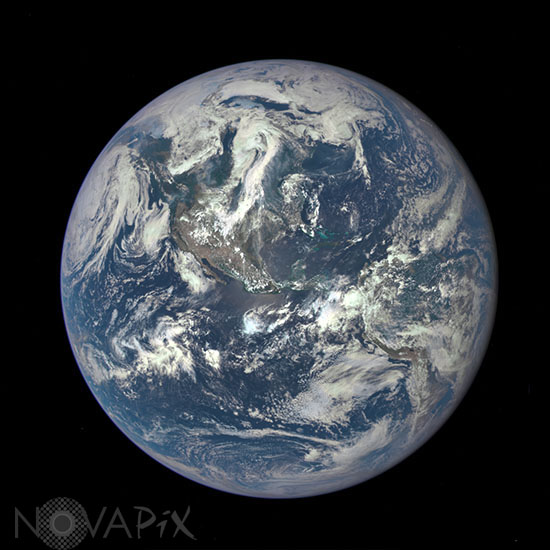Photo Agency - Astronomy - Space - Nature

Earth seen by satellite DSCOVR
auteur: NASA/Novapix
référence: t-glb05-00055
Image Size 300 DPI: 17 * 17 cm
The journey has been a long one for the Deep Space Climate Observatory (DSCOVR). Once known as Triana, the satellite was conceived in 1998 to provide continuous views of Earth, to monitor the solar wind, and to measure fluctuations in Earth’s albedo. The mission was put on hold in 2001, and the partly-built satellite ended up in storage for several years with an uncertain future. In 2008, the National Oceanic and Atmospheric Administration (NOAA), NASA, and the U.S. Air Force decided to refurbish and update the spacecraft for launch.
On February 11, 2015, DSCOVR was finally lofted into space by a SpaceX Falcon 9 rocket. After journey of about 1.6 million kilometers (1 million miles) to the L1 Lagrange Point, the satellite and its Earth Polychromatic Imaging Camera (EPIC) has returned its first view of the entire sunlit side of Earth. At L1—four times farther than the orbit of the Moon—the gravitational pull of the Sun and Earth cancel out, providing a stable orbit and a continuous view of Earth. The image above was made by combining information from EPIC’s red, green, and blue bands. (Bands are narrow regions of the electromagnetic spectrum to which a remote sensing instrument responds. When EPIC collects data, it takes a series of 10 images at different bands—from ultraviolet to near infrared.)
This first public image shows the effects of sunlight scattered by air molecules, giving the disk a characteristic bluish tint. The EPIC team is developing data processing techniques that will emphasize land features and remove this atmospheric effect. Data from EPIC will be used to measure ozone and aerosol levels in Earth’s atmosphere, as well as cloud height, vegetation properties, and the ultraviolet reflectivity of Earth. NASA will use this data for a number of Earth science applications, including dust and volcanic ash maps of the entire planet.
It has not been possible to captures images of the entire sunlit side of Earth at once since Apollo 17 astronauts captured the iconic Blue Marble photograph in 1972. While NASA has released other blue marble images over the years, these have mostly been mosaics stitched together with image processing software—not a single view of Earth taken at one moment in time.
Contact : Stéphane Aubin +33-(0)9-51-26-53-76
© Novapix - All rights reserved






